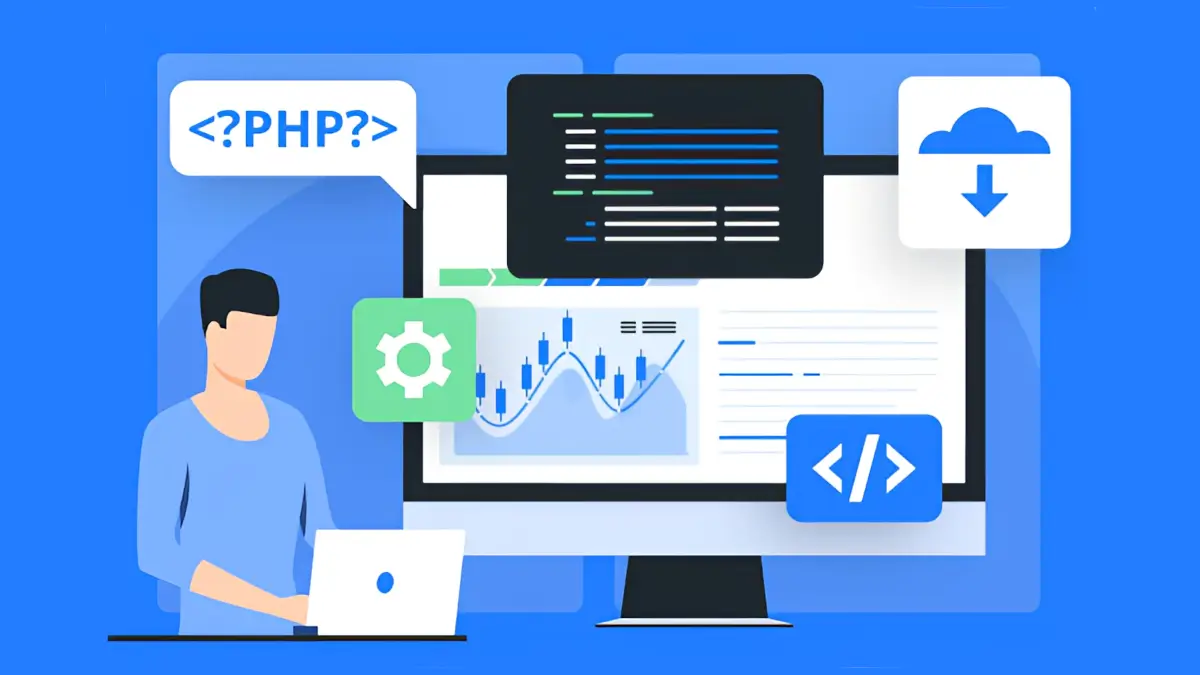PHP-FPM (FastCGI Process Manager) is an advanced alternative to traditional PHP handlers like mod_php or CGI. It significantly enhances the speed and performance of PHP-based websites, making it an essential optimization tool for high-traffic websites, eCommerce stores, and dynamic web applications.

In this guide, I’ll explain what PHP-FPM is, how it works, and how to optimize it for maximum website performance for snappier experience.
What is PHP-FPM?
PHP-FPM is a FastCGI Process Manager that handles PHP scripts more efficiently than traditional methods. Unlike mod_php, which runs PHP as an Apache module, PHP-FPM uses a pool of persistent worker processes to handle incoming PHP requests. This results in lower CPU usage, faster execution, and better scalability.
How PHP-FPM Works?
- Uses a pooling mechanism to handle multiple PHP requests simultaneously.
- Pre-spawns worker processes to serve requests without repeatedly launching PHP executables.
- Optimizes resource allocation by allowing configurations for dynamic and static process management.
- Supports opcode caching and process isolation for enhanced performance and security.
Why PHP-FPM is Faster than Traditional PHP Handlers?
| PHP Handler | Performance | Resource Usage | Scalability |
|---|---|---|---|
| mod_php | Slower | High | Low |
| CGI | Slowest | Very High | Very Low |
| PHP-FPM | Fastest | Low | High |
Key Benefits of PHP-FPM.
- Faster Execution of PHP Scripts – Handles requests more efficiently by keeping worker processes alive.
- Lower Memory & CPU Usage – Prevents excessive resource consumption by reusing PHP workers.
- Better Concurrency Handling – Serves multiple requests simultaneously without overloading the server.
- Improved Security – Isolates PHP processes for each user, reducing security risks on shared servers.
- Customizable Configuration – Allows fine-tuning of resource allocation for optimal performance.
How to Optimize PHP-FPM for High Performance?
1. Configure the Right Process Management Mode.
PHP-FPM allows three process management modes:
- Dynamic Mode (Recommended for most sites) – Adjusts the number of PHP processes based on demand. Dynamic mode is the default mode.
- Static Mode – Uses a fixed number of PHP processes, ideal for high-performance servers where load is calculable and known.
- Ondemand Mode – Starts processes only when needed, reducing resource usage. Best for smaller servers with very limited resources.
All three modes allow us the flex the PHP-FPM as you want.
How to Configure Dynamic Mode in php-fpm.conf File? [Default]
pm = dynamic
pm.max_children = 5
pm.start_servers = 2
pm.min_spare_servers = 1
pm.max_spare_servers = 3Explanation:
pm.max_children: Maximum number of child processes.pm.start_servers: Number of processes created when FPM starts.pm.min_spare_servers: Minimum idle worker processes.pm.max_spare_servers: Maximum idle worker processes.
2. Increase pm.max_children for High-Traffic Sites.
If your website receives high traffic, you may need to increase pm.max_children to handle more concurrent PHP requests.
Example Configuration for a High-Traffic Website.
pm = dynamic
pm.max_children = 50
pm.start_servers = 20
pm.min_spare_servers = 10
pm.max_spare_servers = 30Tip: Monitor your server’s RAM and CPU usage before increasing these values to avoid server crashes.
3. Enable PHP OPcache for Faster Performance.
OPcache speeds up PHP execution by storing compiled PHP scripts in memory, eliminating the need to recompile them on every request.
Enable OPcache in php.ini File.
opcache.enable=1
opcache.memory_consumption=128
opcache.max_accelerated_files=4000
opcache.revalidate_freq=60Tip: Increasing opcache.memory_consumption can improve performance for large applications.
4. Reduce PHP-FPM Request Timeout for Faster Responses.
If a PHP script takes too long to execute, it can slow down your website. Setting a timeout value prevents this.
Set a Reasonable Timeout in php-fpm.conf File.
request_terminate_timeout = 30sTip: For API-heavy applications, set a lower timeout to prevent slow requests from affecting overall performance.
5. Use a Reverse Proxy for Better Load Handling.
Pairing PHP-FPM with NGINX or Apache with mod_proxy_fcgi can further improve performance by reducing direct PHP request handling.
How to Configure PHP-FPM with NGINX?
server {
listen 80;
server_name example.com;
root /var/www/html;
index index.php;
location ~ \.php$ {
include fastcgi_params;
fastcgi_pass unix:/run/php/php-fpm.sock;
fastcgi_index index.php;
fastcgi_param SCRIPT_FILENAME $document_root$fastcgi_script_name;
}
}Tip: Using a reverse proxy reduces direct server load, improving scalability.
6. Optimize PHP-FPM Logging to Reduce Overhead.
Excessive logging can slow down your server. Adjust logging settings to balance debugging and performance.
Recommended Logging Configuration in php-fpm.conf File.
log_level = warning
catch_workers_output = noTip: Avoid log_level = debug in production environments to reduce disk I/O usage. We could have disabled it but some logs are necessary in critical time.
7. Optimize Database Queries for Faster PHP Execution.
Since PHP scripts often interact with databases, optimizing database queries can significantly improve PHP-FPM performance.
Best Practices:
- Use Indexes to speed up queries.
- Avoid
SELECT *, fetch only required columns. - Use Persistent Database Connections.
- Optimize MySQL configuration (
my.cnf) for performance.
Final Thoughts.
PHP-FPM is a powerful tool for improving website speed and performance.
By optimizing process management, enabling OPcache, using a reverse proxy, and tuning configurations, you can significantly reduce load times and enhance scalability. It just need little tweak here and there and you are in beast mode.
Quick Recap of PHP-FPM Optimizations:
✅ Use Dynamic Mode for adaptive resource management.
✅ Increase pm.max_children for high-traffic websites.
✅ Enable OPcache for faster PHP script execution.
✅ Set request timeouts to prevent slow scripts from affecting performance.
✅ Use NGINX or Apache mod_proxy_fcgi for better request handling.
✅ Reduce logging overhead to minimize disk I/O.
✅ Optimize database queries to reduce PHP execution time.
By implementing these optimizations, you can make your PHP-based website faster, more efficient, and highly scalable 🚀.
Next Step: Monitor your server’s performance using tools like htop, New Relic, or PHP-FPM status page to fine-tune further optimizations!
The comment section is always open for any further idea discussion, do let me know if you have any query that I can understand and solve.
Leave a Reply